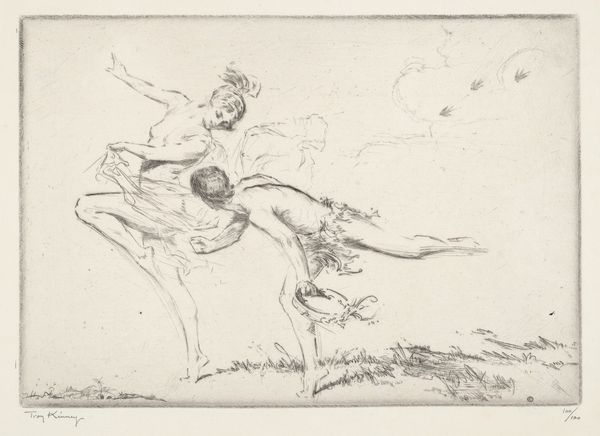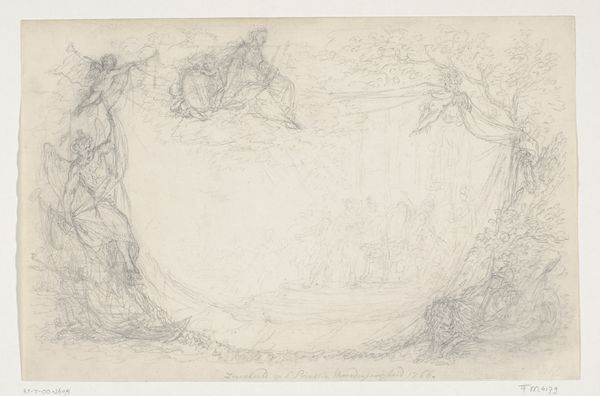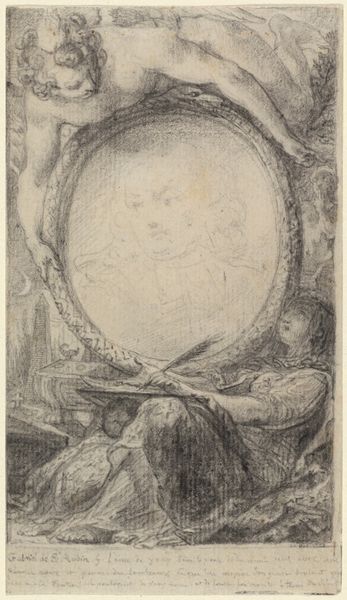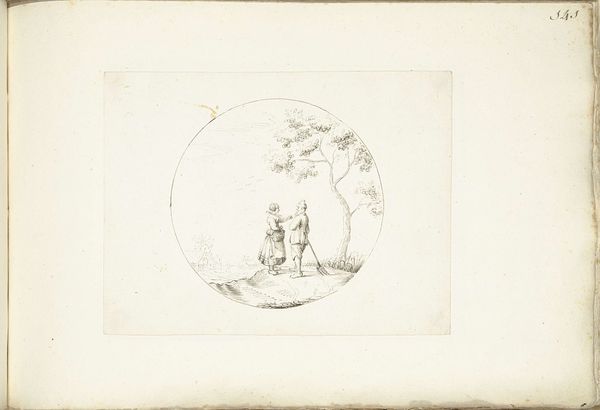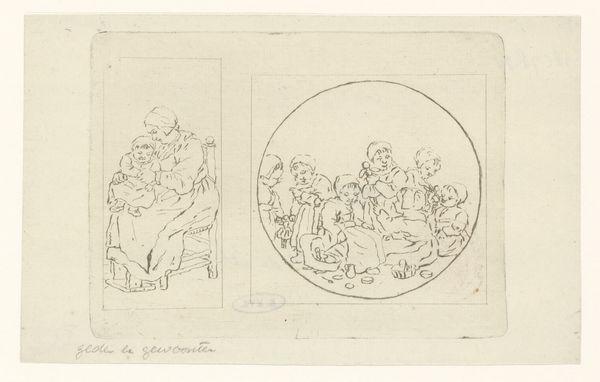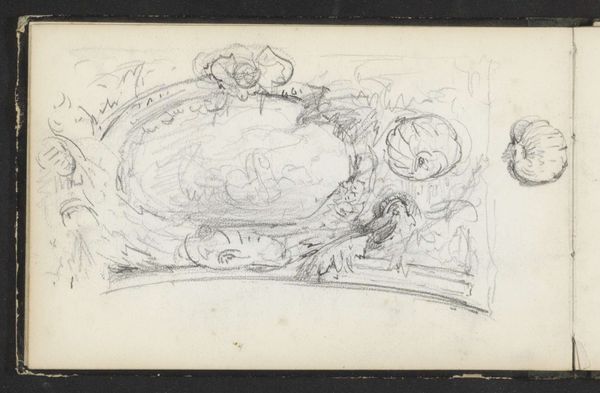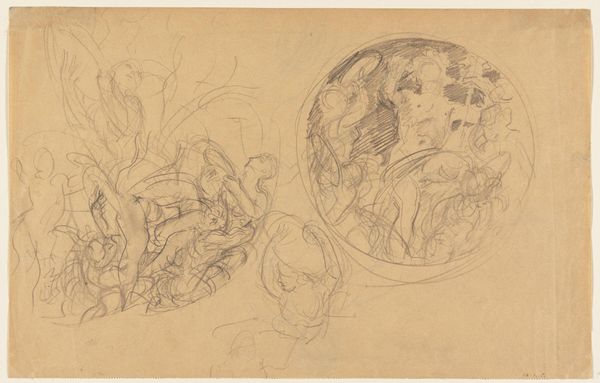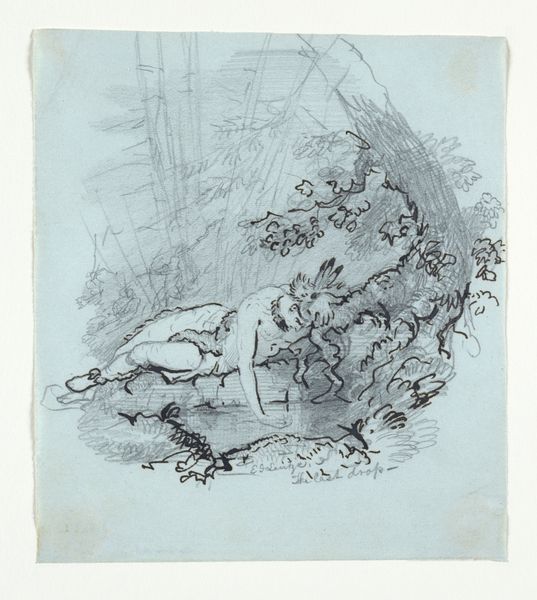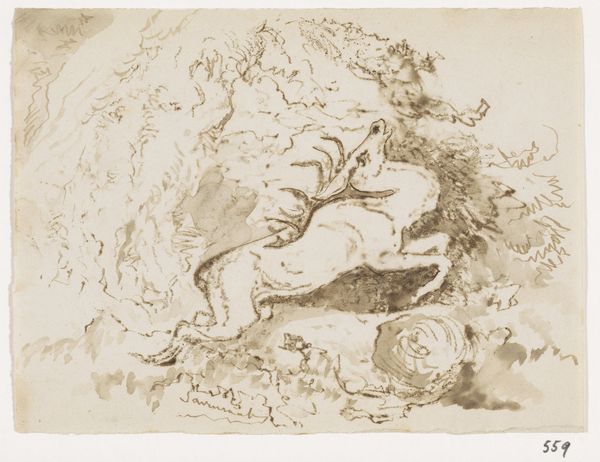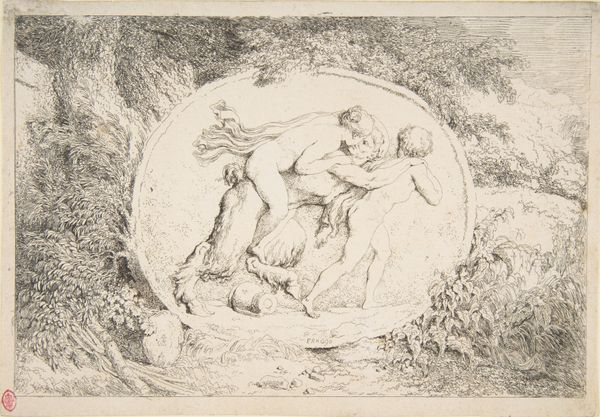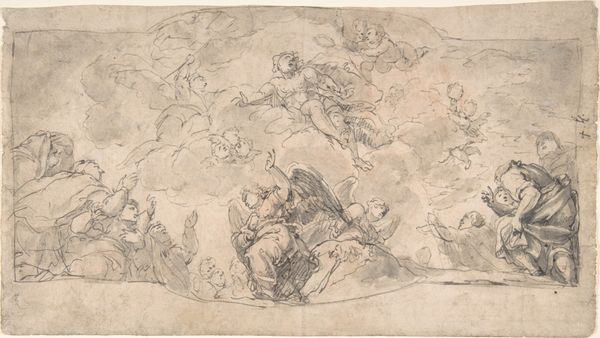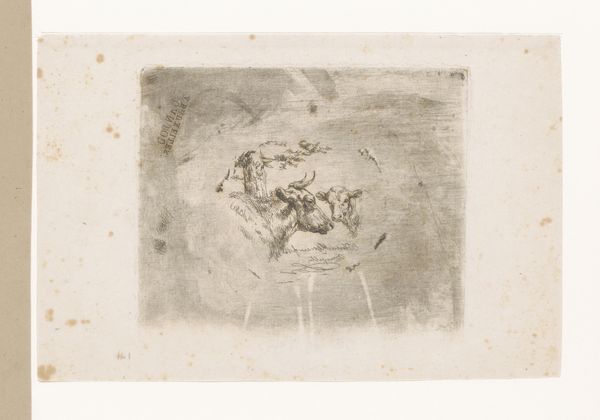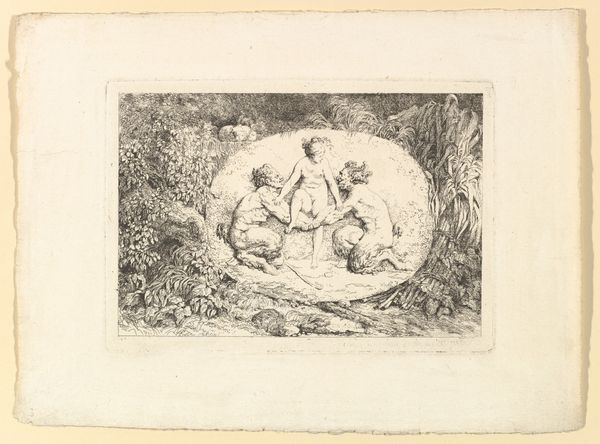
drawing, print, etching, paper
#
drawing
#
ink drawing
#
allegory
# print
#
etching
#
landscape
#
paper
#
symbolism
Dimensions: 200 × 250 mm (image); 200 × 250 mm (plate); 226 × 275 mm (sheet)
Copyright: Public Domain
Auguste Rodin made this etching, "Love Turning the World," in France at the turn of the 20th century. It depicts a group of cherubic figures playfully rotating a globe. Rodin was, of course, a sculptor, but he also worked extensively in drawing and printmaking. This print engages with the social history of art through its playful commentary on classical and Renaissance traditions. The cherubs evoke the putti of earlier art, often used to represent divine love and innocence, but here they are engaged in a distinctly secular and almost chaotic activity. Rodin may be critiquing the institutional role of art, suggesting that love, or perhaps human agency, is what truly moves the world, rather than divine intervention or artistic ideals. To fully understand Rodin's intentions, it would be helpful to delve into the art criticism of his time, the writings of his contemporaries, and the exhibition history of his work. Such research can illuminate the complex dialogue between art and society in turn-of-the-century France.
Comments
No comments
Be the first to comment and join the conversation on the ultimate creative platform.

